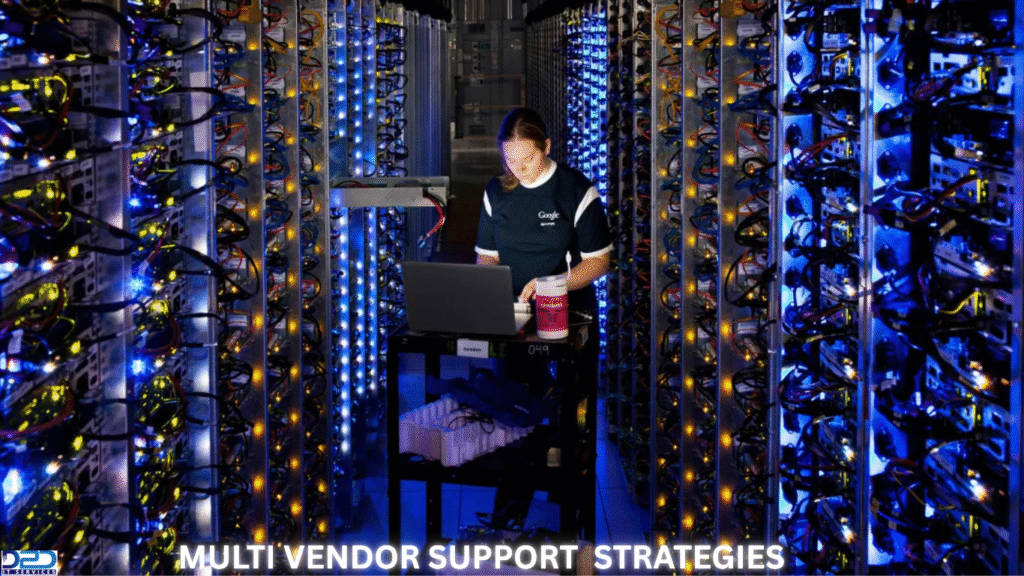As data centers continue to evolve, maintaining diverse infrastructures that include hardware and software from multiple vendors has become the norm. While this diversity provides flexibility and innovation, it also introduces complexity in management and maintenance. That’s where multi-vendor support strategies come into play — offering organizations a way to simplify operations, cut costs, and ensure peak performance.
1. Understanding Multi-Vendor Support
Multi-vendor support is a service approach where a single provider manages maintenance, repair, and technical support for equipment from different manufacturers. Instead of juggling multiple OEM contracts, businesses partner with an experienced IT service provider like D2D IT Services, which delivers comprehensive lifecycle management and third-party maintenance across diverse IT environments.
This approach ensures seamless integration, reduces downtime, and extends the lifespan of critical infrastructure components such as servers, storage devices, and networking equipment.
2. Benefits of Multi-Vendor Support in Data Centers
- Cost Efficiency
By consolidating support under one provider, organizations can reduce maintenance costs by up to 60–80% compared to OEM pricing. Multi-vendor strategies eliminate redundant contracts and streamline billing, freeing up IT budgets for innovation.
- Simplified Management
Managing multiple vendors often leads to confusion and delays. A single point of contact simplifies issue resolution, ensuring faster response times and consistent service levels across all platforms.
- Extended Equipment Lifespan
Many OEMs encourage hardware upgrades after warranty expiration. However, multi-vendor maintenance extends the usable life of IT assets, delaying unnecessary capital expenditure while maintaining performance.
- Increased Flexibility
Data centers evolve rapidly. A multi-vendor approach enables organizations to mix and match technologies that best fit their performance, scalability, and security needs — without being locked into one vendor ecosystem.
3. Building an Effective Multi-Vendor Support Strategy
To achieve optimal results, businesses should follow a structured approach when implementing a multi-vendor support strategy
- Evaluate Current Infrastructure
Start by identifying all hardware and software assets across the data center. Document warranty expirations, dependencies, and performance metrics to assess which components qualify for third-party maintenance.
- Choose a Trusted Support Partner
Select an experienced IT service provider like D2D IT Services, known for 24/7 expert support, adaptable service-level agreements (SLAs), and certified engineers. A reliable partner ensures proactive monitoring and swift issue resolution.
- Establish Clear SLAs
Define measurable SLAs that guarantee uptime, response time, and performance. Ensure your provider offers flexibility to align with your unique operational goals.
- Leverage Proactive Monitoring
Implement advanced Network Operations Center (NOC) and Security Operations Center (SOC) solutions for real-time monitoring and predictive maintenance. Proactive management prevents outages before they occur.
- Integrate Security and Compliance
Your strategy should include cybersecurity measures to protect multi-vendor environments from vulnerabilities and ensure compliance with industry standards.
4.Future of Multi-Vendor Support in Data Centers
As digital transformation accelerates, data centers must become more agile and resilient. Multi-vendor support will play a key role in sustaining uptime, optimizing resources, and adapting to hybrid cloud environments. Organizations that embrace this model will enjoy enhanced flexibility and long-term savings while staying ahead of technological change.
Conclusion
Multi-vendor support strategies are no longer optional — they’re essential for data centers aiming to stay competitive in today’s dynamic IT landscape. Partnering with an expert like D2D IT Services helps businesses simplify operations, cut costs, and achieve consistent performance across multi-vendor environments.








